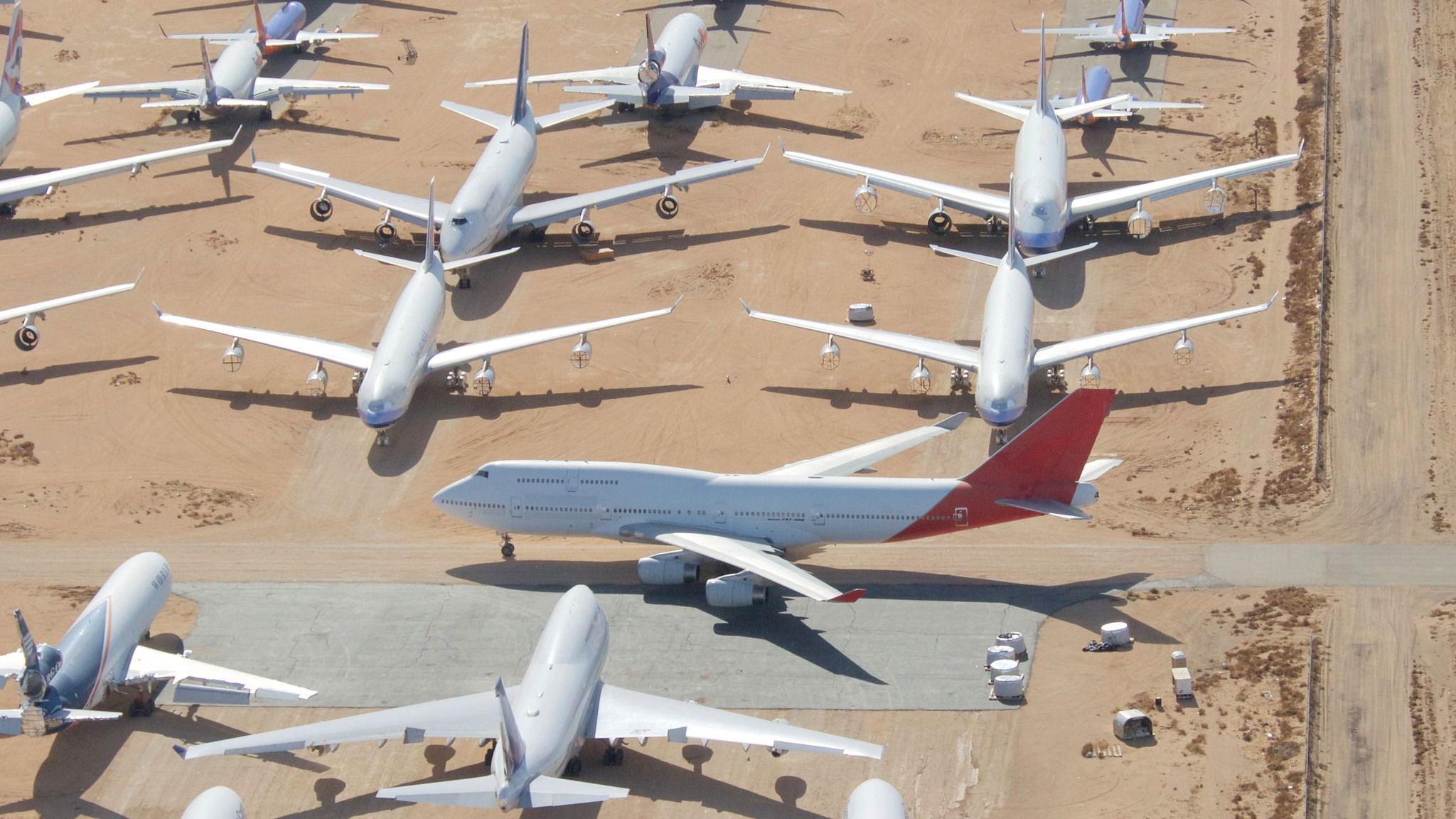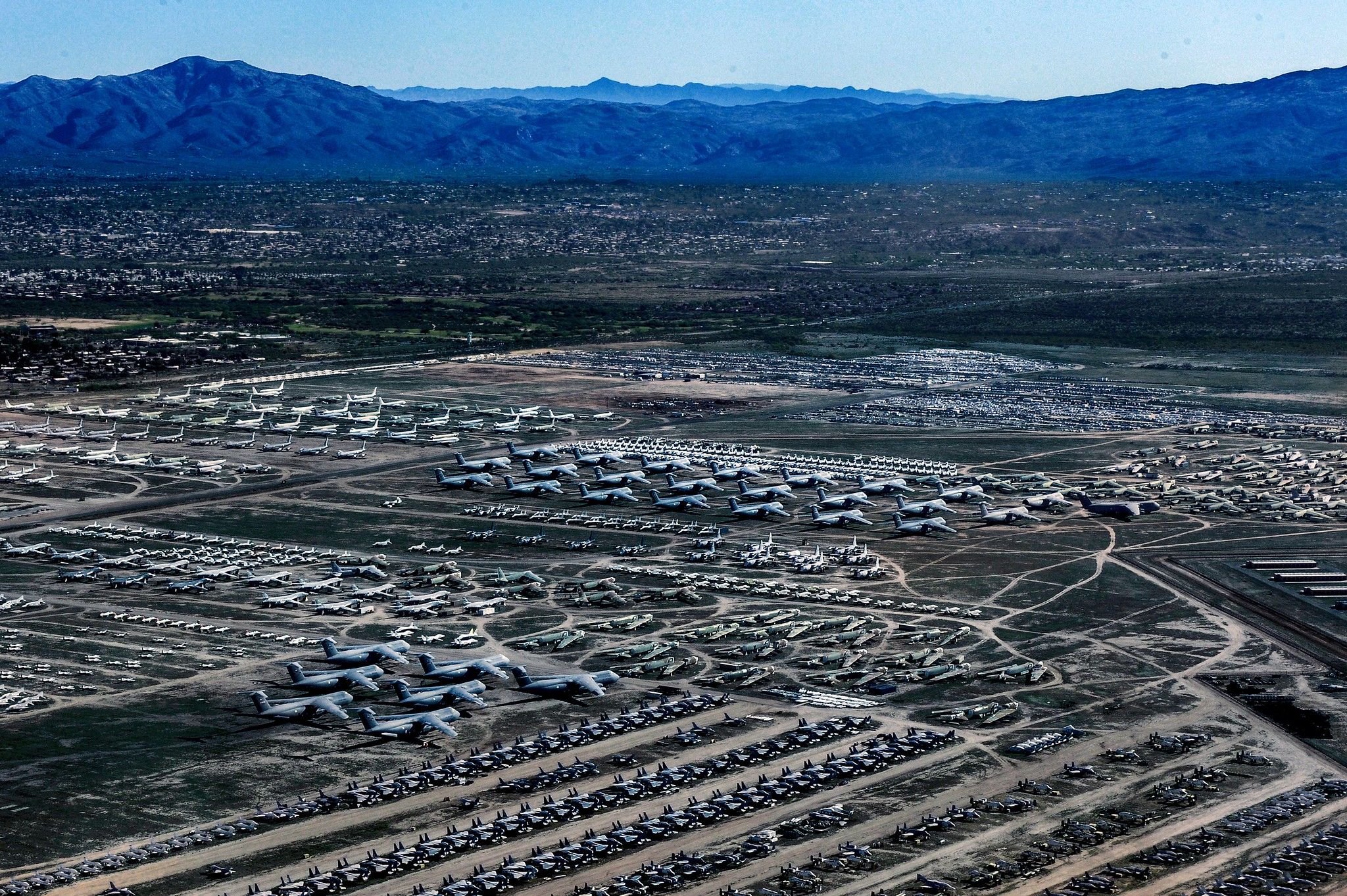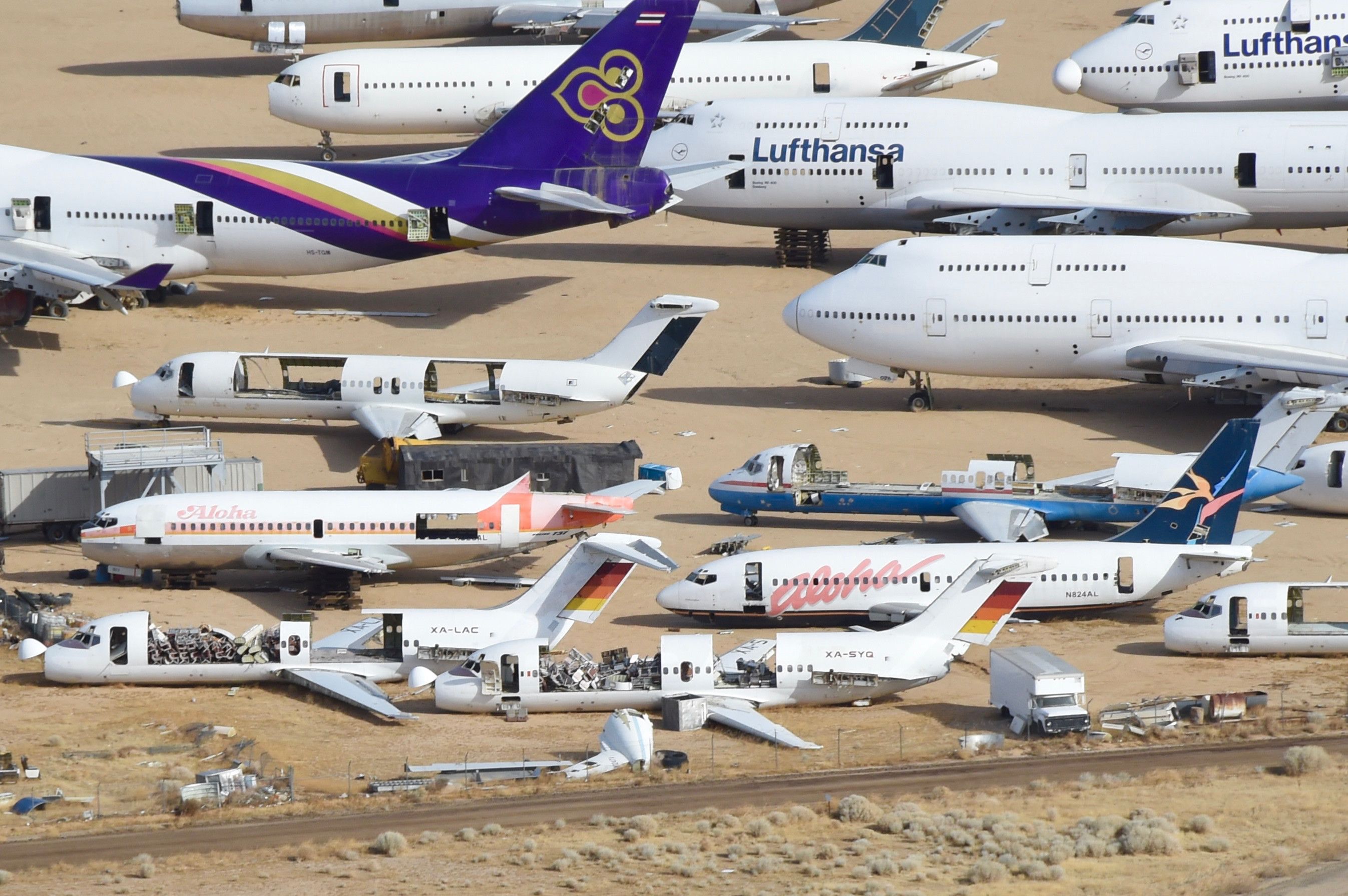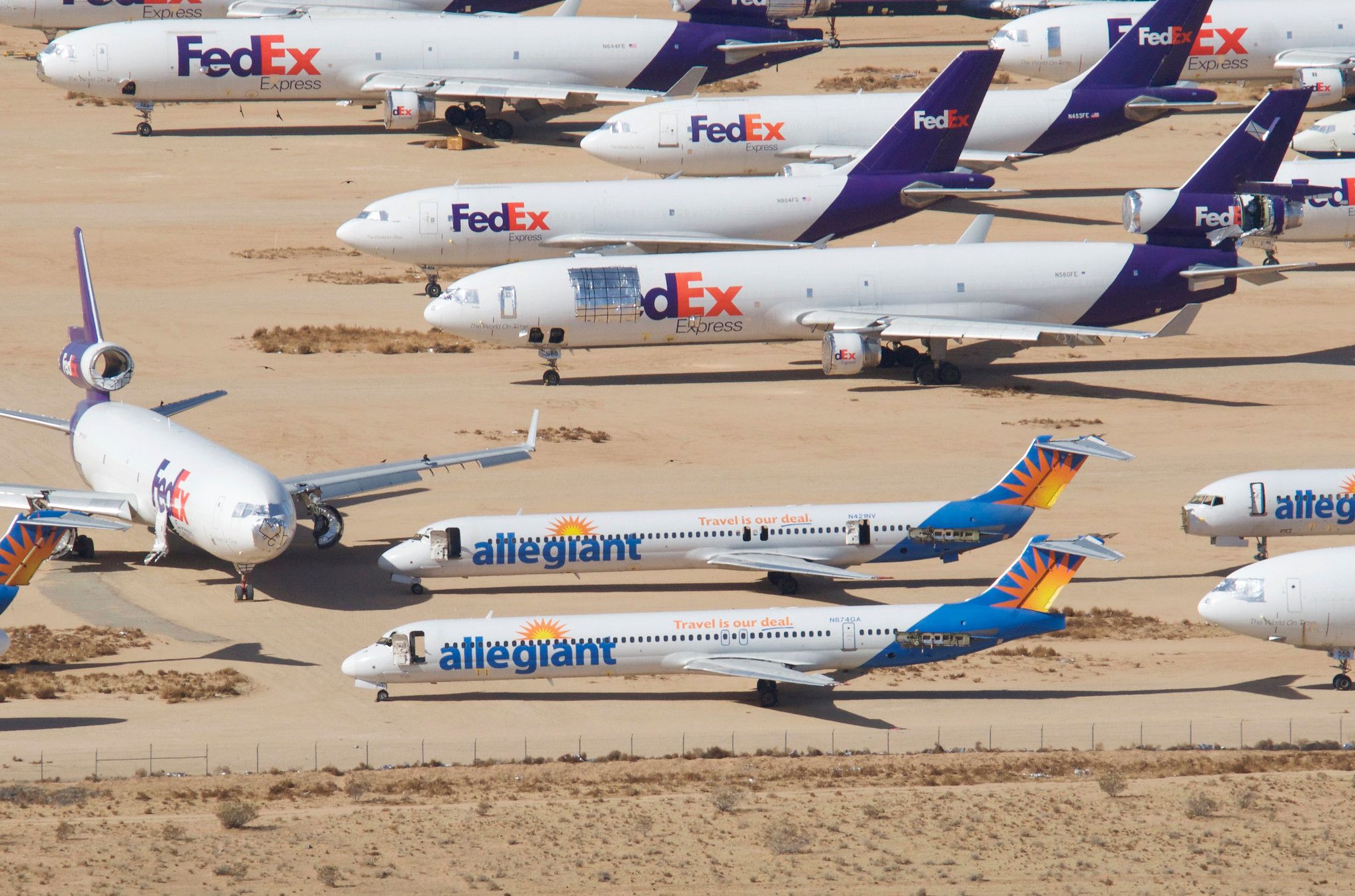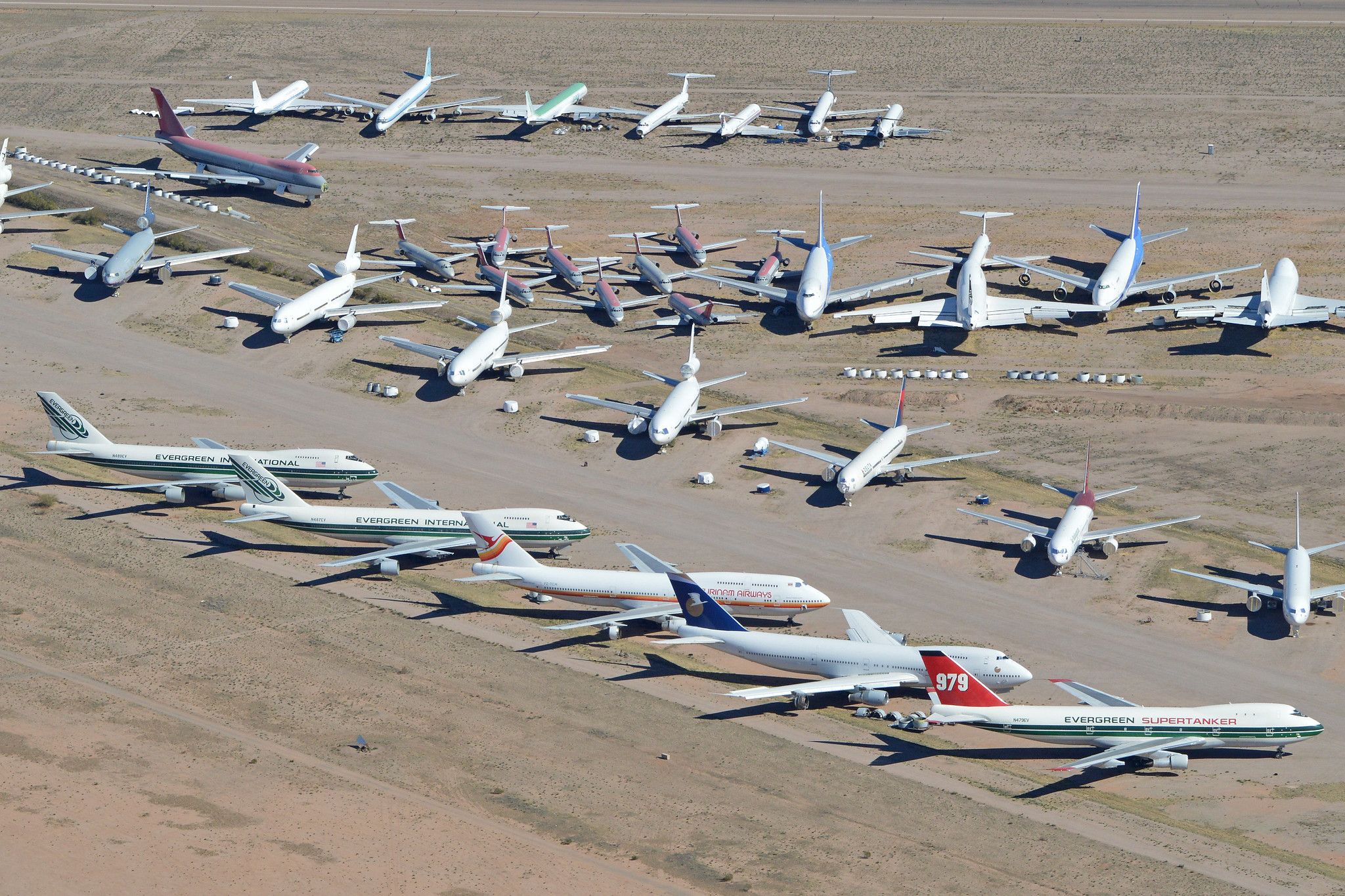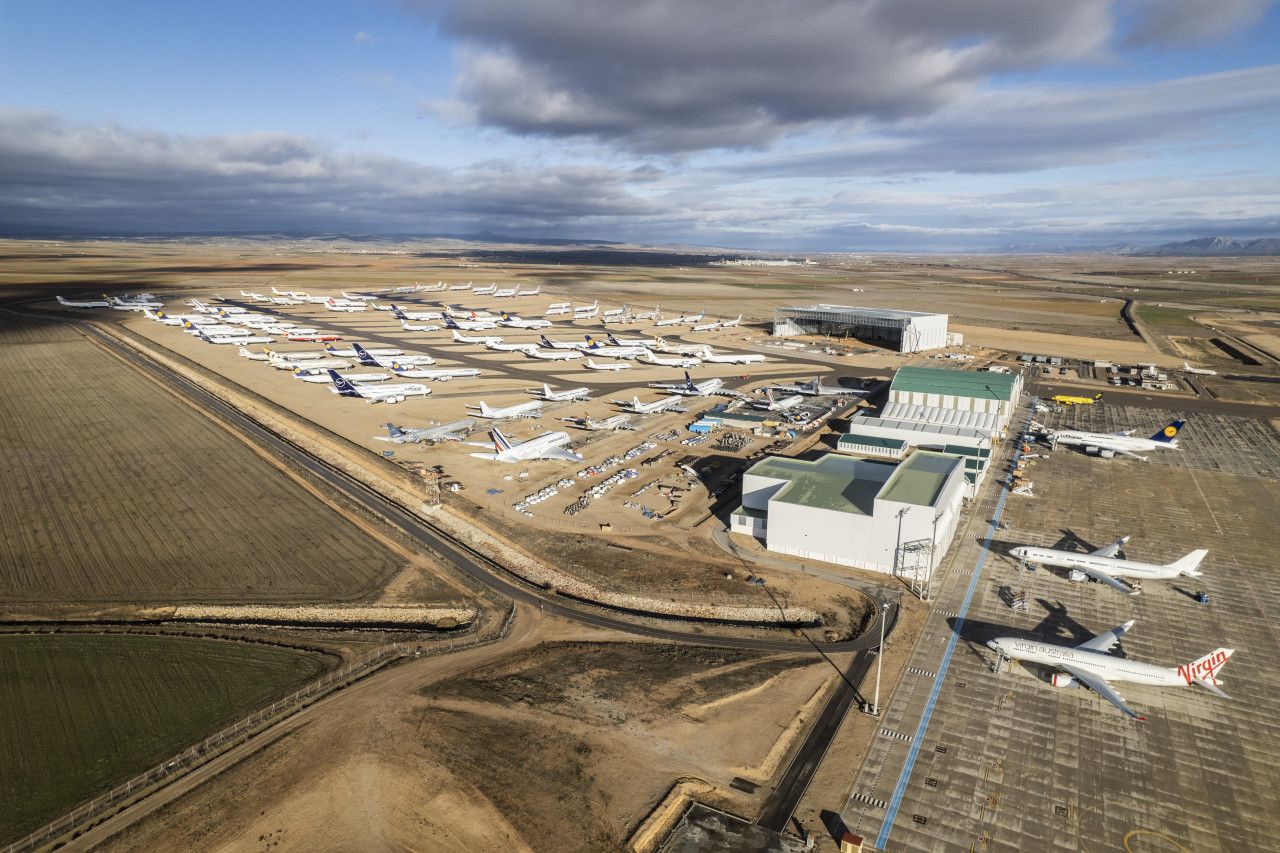Summary
- Aircraft graveyards, also known as boneyards, are located in deserts or areas with low humidity to prevent corrosion and save costs.
- The Davis-Monthan Air Force Base in Tucson, Arizona is the world’s largest military aircraft graveyard and was originally used to store surplus aircraft.
- Other significant aircraft graveyards include the Southern California Logistics Airport, Pinal County Airpark, Mojave Air and Space Port, and Teruel Airport in Europe.
A comprehensive look at five of the world’s biggest aircraft graveyards and why their location was deemed ideally suited for the job. Before we get into that, though, what exactly is an aircraft graveyard? Almost always located in deserts or places with little humidity, aircraft graveyards or boneyards, as they are also known, are where planes go for long-term storage or to be scrapped.
The most significant proportion of aircraft graveyards can be found in the Southwestern United States. Still, there are other parts of the world, like the Middle East and Australia, that have similar weather. Storing aircraft in places that have little humidity helps to prevent corrosion, and the hard, solid ground does not need to be paved, saving thousands of dollars. Before aircraft are scrapped for their metal, engines, instruments, and anything that can be reused is removed, leaving just a metal shell.
1 Davis-Monthan United States Air Force Base
Size: 10,633 acres (16.5 square miles)
Located close to Tucson, Arizona, on South Kolb Road, the residential neighborhoods disappear, leaving row upon row of parked aircraft that range in size from fighter jets to massive transports.
Following the surrender of Japan in September 1945, the United States Air Force had a massive surplus of aircraft and needed a place to store them. At the time, Davis–Monthan Army Air Field, as it was known then, was a bomber training base that had plenty of room to store aircraft.
Adding to its appeal as an aircraft storage facility was that Tucson has a hot desert climate that gets less than 11 inches of rainfall a year – storing unused aircraft in arid, desert environments is preferable to wet or humid climates. By the spring of 1946, the Air Force had sent more than 600 Boeing B-29 Superfortress and 200 C-47 Skytrain aircraft to the site.
For a while, Davis-Monthan was the home of the Enola Gay, until the plane was sent to be put on display at the Smithsonian Museum in Washington DC. In 1965, the Department of Defense decided to close the United States Navy aircraft storage facility in Phoenix and consolidate all surplus military aircraft at Davis-Monthan.
Today, the Davis-Monthan United States Air Force Base is the largest aircraft graveyard in the world and home to the 309th Aerospace Maintenance and Regeneration Group (AMARG). According to the AMARG, the facility stores, on average, 3,200 aircraft, 6,100 engines and almost 300,000 line items of tooling and test equipment.
2 Mojave Air and Space Port (MHV)
Size: 2,998 acres (4.7 square miles)
Photo: Aero Icarus|Flickr
Located in California’s Mojave Desert near Edwards Air Force Base 95 miles north of Los Angeles, the airport began life in the 1930s as a rural airfield. Following the surprise Japanese attack on Pearl Harbor on December 7, 1941, the Department of Defense took control of the airport and built Marine Corps Auxiliary Air Station (MCAAS) Mojave.
Barracks were constructed to house 3,000 servicemen and women, and a third runway was added. At its peak, the airfield had 145 operational aircraft. After the Korean War, the airfield was handed over to the City of Mojave, who decided it would be an ideal location to store or scrap aircraft.
Today, it is a hub of aviation innovation, with more than 60 companies working on the industrial park undertaking flight research, testing, engineering, and more, according to Aeroclass. But its aircraft graveyard is one of the biggest in the world, with some of the latest residents to have moved into the facility including Lufthansa’s Boeing 747s and China Southern’s A380s.
3 Southern California Logistics Airport (SCLA)
Size: 2,300 acres (3.6 square miles)
Southern California Logistics Airport (SCLA) is one of the world’s largest commercial aircraft boneyards and a favorite place for retired aircraft waiting to be scrapped. Located on the fringe of the Mojave Desert near Victorville, California, an hour and a half drive from Los Angeles, SCLA can accommodate up to 500 large aircraft.
The facility began life as George Air Force Base in 1941 when the United States Army Air Corps used it as an Advanced Flying School. Following the war’s end, the base closed only to be reopened at the start of the Korean War five years later. In the early 1990s, the Air Force decided to close the base. SCLA saw its potential as a significant logistics airport for the Southwestern United States. Victorville was not only connected to the Interstate Highway network but also had a rail depot at the airport.
Today, Southern California Logistics Airport has two runways and is home to Cargolux, Lufthansa, Volga-Dnepr Airlines, and Federal Express. The two runways are:
- Runway 17/35: 15,050 ft × 150 ft (4,587 m × 46 m), surface: asphalt/concrete
- Runway 03/21: 9,138 ft × 150 ft (2,785 m × 46 m), surface: asphalt/concrete
SCLA also offers ramp and hangar space that can accommodate over 20 aircraft for transitional maintenance and a paint shop large enough for Boeing 787 Dreamliners. According to Airplane Boneyards, the facility has space to accommodate more than 500 stored aircraft. During the pandemic, the airfield proved to be a temporary home for Air New Zealand’s Boeing 777s, which have since been reactivated, and even a brand-new Boeing 787-10 for British Airways.
4 Pinal County Airpark (MZJ)
Size: 1,508 acres (2.4 square miles)
Located in Pinal County near the town of Marana, Arizona, Pinal County Airpark (MZJ) began life as Marana Army Air Field. When the base opened in 1943, it was used as a pilot training facility. Following the war, the base was given to Pinal County, which later leased it to Intermountain Airlines, a front company for the Central Intelligence Agency (CIA). The CIA used MZJ as a base for its covert operations during the Vietnam War.
Covering a land area of 1,508 acres, Pinal Airpark has a single 6,893-foot-long asphalt runway and four helipads. Because of its location in the Sonoran Desert, the hottest desert in both the United States and Mexico, Pinal County Airpark (MZJ) has become a popular storage destination for aircraft retiring from airlines. According to ABC, the facility can accommodate more than 400 aircraft on-site, which currently includes some of Virgin America’s old Boeing 747s and a stranded televangelist’s Boeing 747SP.
5
6 Teruel Airport (TEV)
Size: 1,359 acres (2.1 square miles)
Photo: Teruel Airport
Located in the Province of Aragon, an equal distance from Madrid, Barcelona, Valencia, and Zaragoza, Teruel Airport has an arid climate. Teruel Airport began life as Caudé Aerodrome and was used by the Spanish Republican Air Force during the Spanish Civil War (1936-1939). Following the Nationalist’s victory, the airfield was used by the military as an artillery firing range.
Owned today by a consortium formed by the Government of Aragon and Teruel City Council, Teruel Airport is the largest aircraft storage and maintenance facility in Europe. It has a single 9,268-foot-long asphalt runway and can accommodate up to 250 parked planes. During the COVID-19 pandemic, Teruel Airport was home to 100 parked aircraft, mainly from European airlines.
